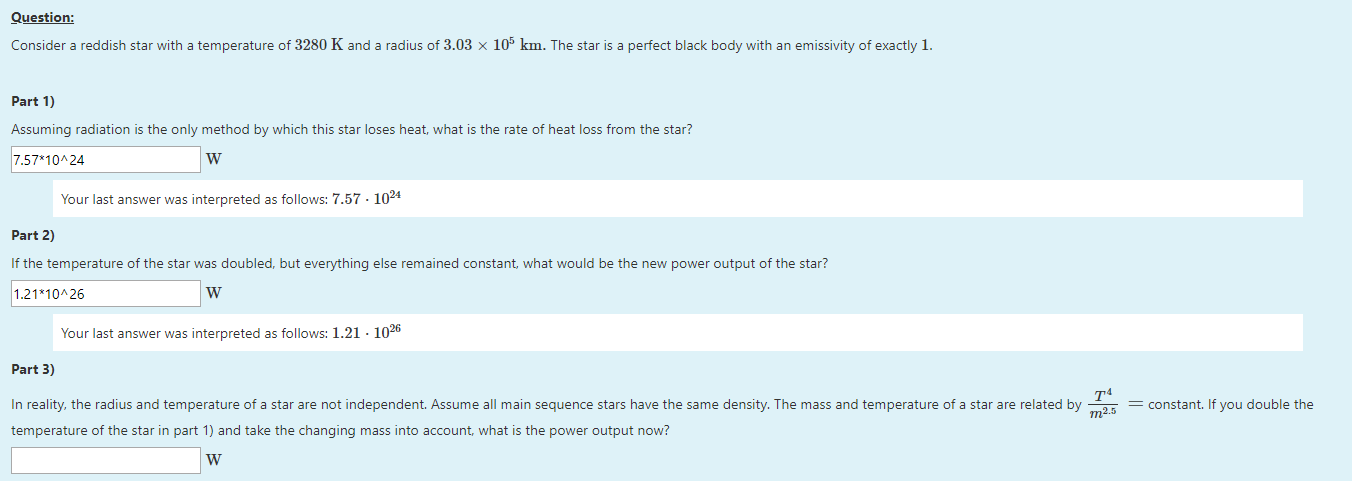Question
PART 3 ONLY

Transcribed Image Text:Consider a reddish star with a temperature of 3280 K and a radius of 3.03 × 105 km. The star is a perfect black body with an emissivity of exactly 1.
Part 1)
Assuming radiation is the only method by which this star loses heat, what is the rate of heat loss from the star?
7.57*10^24
W
Your last answer was interpreted as follows: 7.57 · 1024
Part 2)
If the temperature of the star was doubled, but everything else remained constant, what would be the new power output of the star?
1.21*10^26
W
Your last answer was interpreted as follows: 1.21 · 1026
Part 3)
In reality, the radius and temperature of a star are not independent. Assume all main sequence stars have the same density. The mass and temperature of a star are related by
_Tª
m2.5
= constant. If you double the
temperature of the star in part 1) and take the changing mass into account, what is the power output now?
W
Expert Solution
This question has been solved!
Explore an expertly crafted, step-by-step solution for a thorough understanding of key concepts.
Step by stepSolved in 3 steps with 6 images

Knowledge Booster
Similar questions
- what is the correct equation for this objectarrow_forward13. When you jump out of the boat standing in still water, the boat will move * forward backwards sideways O clockwisearrow_forwardDuring takeoff, an airplane goes from 0 to 50 m/s is 5 . What is its acceleration? Calculate answer to one decimalarrow_forward
arrow_back_ios
arrow_forward_ios